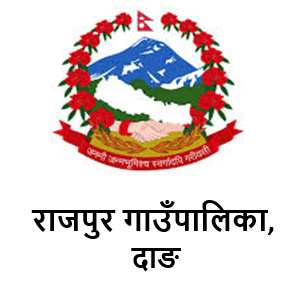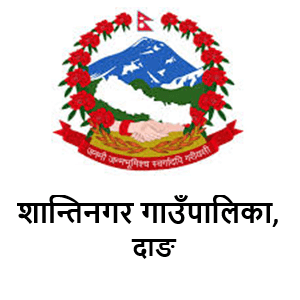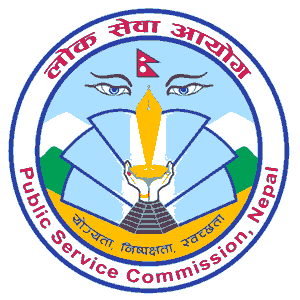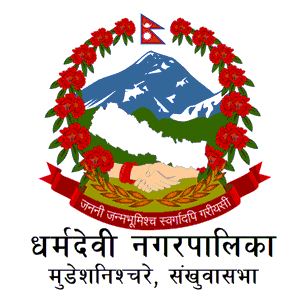Overview
Babai Rural Municipality (Babai Gaupalika) is formed by merging the former Panchkule and Purandhara VDCs within Dang District, under Lumbini Province. This rural municipality is situated 46 kilometers west of the district headquarters, Ghorahi. It covers an area of 257.48 square kilometers. To the east, it is bordered by Shantinagar and Dangisharan Rural Municipalities, to the west by Banke District, to the north by Salyan District, and to the south by Dangisharan Rural Municipality and Banke District.
Babai Rural Municipality is one of the newly formed rural municipalities in Dang District with significant development potential. Politically aware parties and motivated residents are the strong and sustainable sources for the development of this rural municipality.
Economic Overview:
The average household income in the municipality is primarily derived from agriculture, and another major source of income for the locals is foreign employment. There is an increasing trend of local manpower going abroad for labor and studies. The rural municipality provides educational facilities from basic to higher education, with a total of 34 community educational institutions, including 22 primary schools, 6 lower secondary schools, and 6 secondary schools. Additionally, there are 9 institutional schools: 3 primary, 3 lower secondary, and 3 secondary.
Cultural Diversity:
The municipality is home to various communities and ethnic groups, each celebrating different festivals such as Dashain, Tihar, Maghi, Holi, Maha Shivaratri, Ram Navami, Krishna Janmashtami, Bakr Eid, Aitabari, Buddha Jayanti, Christmas, etc.
Establishment:
According to Article 295, Subsection (3) of the Constitution of Nepal, the Commission for the Determination of the Number and Boundaries of Village Bodies, Municipalities, and Special, Protected, or Autonomous Areas presented its report on 2073/09/22. Based on the report submitted by the committee formed under the chairmanship of the Honorable Minister of Federal Affairs and Local Development on 2073/11/20, and following the government's decision on 2073/10/22, Babai Rural Municipality was established on 2073/11/22 by merging the former Panchkule and Purandhara VDCs into 7 wards.
Topography
On the world map, Babai Rural Municipality is located between 28°04'37" to 28°17'04" N latitude and 82°55'25" to 82°10'02" E longitude. This rural municipality is situated at an elevation ranging from 470 meters to 1,891 meters above sea level.
The current land use in Babai Rural Municipality shows that 75.79% (195.13 sq. km) of the area is covered by forests, 13.53% (34.84 sq. km) is arable land, 3.64% (9.37 sq. km) is shrubland, and 4.38% (11.29 sq. km) is sandy land. Grazing land occupies about 1.63% (4.19 sq. km) of the area, while rivers, streams, and ponds cover 0.92% (2.37 sq. km), and other land occupies 0.10% (0.25 sq. km). The municipality is rich in fertile soil suitable for agriculture, with loamy and clayey soils found in abundance. The main crops produced here include rice, wheat, maize, barley, mustard, potatoes, tobacco, sugarcane, lentils, peas, chickpeas, and soybeans.
Climate
Babai Rural Municipality is geographically diverse, which reflects in its varied climate. The municipality's climate is divided into two categories: tropical and subtropical. Being located in the Terai and Inner Madhes regions, the air here has relatively lower humidity compared to other Terai and eastern districts, making the climate feel dry. Despite the presence of numerous rivers, streams, and ponds, most of these water bodies dry up during the summer months, especially before the monsoon season. The average maximum temperature in the municipality can reach up to 36.3°C, while the average minimum temperature is 4.8°C. The summer is generally hot, and the winter is mildly cold. The average annual rainfall is 548 mm, with the most rainfall occurring during Asar, Shrawan, and Bhadra. Rainfall is influenced by monsoon winds from the Bay of Bengal, which are active from Asar to Bhadra. During winter, sporadic rainfall occurs due to western monsoon winds.
Potential and Opportunities in Babai Rural Municipality
Education: There are various potentials and opportunities for trade, small-scale industries, training centers, financial services, foreign employment, fish farming in ponds and rivers, and modern agriculture within the municipality's area.
The majority of households in Babai Rural Municipality are engaged in agriculture. The fertile land within the municipality offers great potential for increasing the production of food crops, cash crops, fruits, spices, herbs, and animal products. However, the lack of modern agricultural technology, seeds, fertilizers, and tools, along with the high cost of these inputs, has limited the necessary increase in agricultural production. By raising awareness, enhancing skills and commercialization, transferring technology, and simplifying the availability of necessary technology, fertilizers, loans, and seeds, there is significant potential to improve agricultural and animal production, thereby improving the economic situation.
The fertile land in the municipality is diminishing daily due to the adoption of scientific agricultural systems, and the soil's fertility is gradually decreasing, leading to a decline in production and productivity. By organizing scattered settlements and improving traditional irrigation channels, soil fertility can be enhanced, reducing environmental pollution, and making the municipality a secure and favorable place for future generations.
There is considerable potential for expanding dairy and poultry production in rural areas. If transportation services are extended to the reach of farmers, milk chilling centers and meat processing industries can be developed in many places, creating employment opportunities and increasing the overall income of the rural municipality.
By organizing the natural resources available in the municipality and adopting environmentally friendly technology, local employment can be created in rural areas, and sustainability can be brought into the utilization of local resources. The presence of natural water bodies and rivers/streams in the municipality, along with the construction of additional ponds in certain areas for fish farming, could increase employment opportunities.
By organizing and institutionalizing the community forest user groups in the municipality, promoting non-timber forest products like herbs and honey production, and marketing these products, significant economic progress can be made. This would lead to balanced utilization of natural resources and improvement in the standard of living for local residents.
The municipality, as well as the entire nation, is facing increasing unemployment, and there is a growing attraction to foreign employment due to the lack of sufficient job opportunities in both governmental and non-governmental sectors. If the interested youth in this rural municipality are provided with skill-based training and integrated employment opportunities are created, this area could make a significant contribution to the economic development of the municipality.
Potential Development Measures for Babai Rural Municipality:
-
Utilizing the water resources and rivers within the municipality to facilitate irrigation through canals and other technologies can lead to a remarkable increase in agricultural production.
-
By upgrading the local dirt roads to blacktop roads, residents can enjoy better transportation services, and the overall beauty of the rural municipality can be enhanced.
-
Given the lack of market challenges for vegetables, livestock, and other agricultural products, it seems feasible and appropriate to focus on commercial agricultural production.
-
Expanding small cottage and agriculture-based industries in this area could increase local employment opportunities.
-
Given the presence of various religious and cultural sites in this area, there is potential for developing tourism.
-
Since government, cooperative, non-governmental, and private organizations are active in this area, there is potential for partnerships in the development of the rural municipality.
-
Given the increasing number of consumers in the municipality, there is potential for the development of industries, trade, and commerce.
Opportunities and Possibilities in Babai Rural Municipality:
The existing opportunities and possibilities for social and physical development in Babai Rural Municipality can be summarized as follows:
-
Availability of sufficient natural resources such as forests, fertile agricultural land, water resources, and flat biodiversity.
-
Increase in educated human resources.
-
A dominant youth population.
-
Connection to the national highway system.
-
Potential for small-scale and cottage industries based on agriculture and herbs.
-
Potential for tourism development.
Challenges and Problems in Babai Rural Municipality
The challenges and problems faced by Babai Rural Municipality for its social and physical development can be summarized as follows:
- Lack of necessary employment-generating industries and factories within the municipality.
- Inadequate management of drinking water and public toilets in the municipality.
- Many roads within the municipality are unpaved and of low quality.
- Despite having arable land, the development of commercial farming has not been achieved.
- The lack of income sources has caused issues in the municipality's quality development process.
- Inability to organize settlement development.
- Lack of planned settlement development.
- Absence of concrete plans for environmental protection and waste management.
- Dependence on rainwater for irrigation.
- Traditional agricultural systems.
Inter-Municipality Relations:
Rural municipalities are interconnected in some way or another. The nature and distance of these relationships vary between municipalities. For human development, it is necessary to travel to different places and utilize available resources, resulting in one municipality being dependent on another. The main areas of interdependence include transportation, migration, agricultural and livestock products, forest resources, tourism, employment, natural resource utilization and management, education, and health. Agricultural and forest products from hilly areas often enter the Terai. Since the Terai region is more developed than the hilly districts, there is a significant migration trend. Seasonal migration from hills to Terai for employment is common. These various factors have strengthened inter-municipality relations.
Additionally, Babai Rural Municipality maintains good relationships with neighboring municipalities such as Dangisharan Rural Municipality, Shantinagar Rural Municipality, Kalimati Rural Municipality of Salyan District, and the District Coordination Committee Dang. This coordination has facilitated the implementation of developmental activities in the region. Similarly, there are good relations with various national and international non-governmental organizations.
Religious, Natural, and Tourist Attractions:
Nepal is globally recognized as a tourist destination due to its unique geographical structure, climate, wildlife, forests, and cultural diversity. Tourism is a natural gift for Nepal. The country is blessed with beautiful high mountain ranges, ever-flowing crystal-clear rivers, waterfalls, lakes, natural caves, and diverse forests, which are natural treasures. Nepal's culture, ethnic groups, and lifestyle are also attractive aspects of tourism. Proper utilization of these tourist resources can significantly contribute to the country's economic prosperity and strengthen its economy. Therefore, the Tourism Policy 2065 primarily aims to create employment through tourism, alleviate poverty, research tangible and intangible heritage, and promote the development and expansion of air and land routes and sustainable tourism infrastructure.
Natural lakes, wetlands, rivers, and greenery offer breathtaking views that attract both domestic and international tourists. In the geological history, several small and large rivers and ponds have formed in this region. Among the rivers, lakes, and waterfalls in Babai Rural Municipality, Purandhara Waterfall stands out as a tourist attraction.
Major Festivals:
Babai Rural Municipality is home to people of various ethnicities, religions, and cultural backgrounds. Most residents belong to the Tharu indigenous people, as well as people of hill and Madhesi origins who predominantly follow Hinduism. There are also followers of Islam and Christianity. Each ethnic and religious community has its own unique culture and traditions. Major festivals celebrated here include Dashain, Tihar, Ram Navami, Maha Shivaratri, Haritalika, Shree Panchami, Krishna Janmashtami, Vivaha Panchami, Chhath, Holi, Chaite Dashain, Saune Sakranti, Maghi, Matatirtha Aunsi, Akshaya Tritiya, Harishayani-Haribodhini Ekadashi, Nag Panchami, Raksha Bandhan (Janai Purnima), Kushe Aunsi, Balachaturdashi, Kojagrat Purnima, Shri Swasthani Purnima, Karkat Sankranti, Sankat Puja, Buddha Jayanti, Eid, Bakrid, Eid ul-Fitr, Christmas Day, and the English New Year.
Similarly, various religious and cultural festivals and fairs are also celebrated here. Suwakoti Mela, Shivaratri Mela, and Barah Mela are some of the major fairs held in and around the municipality.
Culture, Art, Language, and Literature:
Babai Rural Municipality is rich in culture, art, language, and literature. However, due to the lack of study and conservation, some forms of art, culture, and traditions are in an intangible and endangered state. The indigenous Tharu community residing in this municipality has a unique culture that attracts cultural tourism.
a) Magar Culture
One of the significant aspects of the tourism potential of the municipality is its unique culture. From a sociological perspective, culture has a broad and comprehensive meaning and definition. In summary, culture encompasses the lifestyle, behavior, thought, values, traditions, beliefs, art, language, customs, and religion of people. The Magar community residing in this rural municipality is rich in cultural heritage. The Magar people possess unique lifestyles, knowledge, and skills. However, due to the influence of modern lifestyles and interactions with various cultural groups, their cultural uniqueness has seen some changes. The Magar community is recognized as one of the indigenous groups residing in almost every district of Nepal. In Babai Rural Municipality, 18.94% of the population belongs to the Magar community. It is necessary to document and preserve the unique cultural aspects and indigenous knowledge of the Magar people. Cultural tourism has become a point of interest and attraction for both domestic and international tourists. While integrating rural tourism in Babai, efforts to develop Magar restaurants and eateries offering their unique dishes are essential. Additionally, attracting domestic and international tourists through showcasing their attire, dances, musical instruments, songs, and games is possible. In this context, Babai Rural Municipality has ample potential to become a tourist destination showcasing Magar culture. The municipality is developing as a hub of cultural convergence where different cultures, arts, and customs from various places and backgrounds merge. The indigenous Magar community's unique culture, customs, attire, language, and way of life have become cultural heritage in Babai. Magar villages generally have high population density. These people prefer living together rather than in isolation. However, with modernity, the trend of family separation has been increasing in the Magar community.
Traditional dances like Bhume, Seridde, Damphuya, and other folk dances like Sorathi, Tappa, Bayaldhari, Mamai, and Singaru are considered important. The Magar people have their unique attire. Men wear lungi-kurta, a black Bhadgaunle topi, and bhagras, while women wear lungi, gunyu-cholo, lehenga-gatiya, and fariya. With the influx of other communities in this rural municipality, the traditional attire of the Magar community is gradually declining. Nowadays, Magars are seen wearing their traditional attire only during festivals or formal events. There is a significant potential to benefit from cultural tourism by preserving and promoting these diverse cultures.
b) Tharu Culture
One of the significant aspects of the tourism potential of the municipality is its unique culture. From a sociological perspective, culture has a broad and comprehensive meaning and definition. In summary, culture encompasses the lifestyle, behavior, thought, values, traditions, beliefs, art, language, customs, and religion of people. The indigenous Tharu community residing in the two Terai districts of Dang and Kanchanpur is rich in cultural heritage. The Tharu people possess unique and indigenous lifestyles, knowledge, and skills. However, due to the influence of modern lifestyles and interactions with various cultural groups, their cultural uniqueness has seen some erosion.
Babai Rural Municipality is developing as a hub of cultural convergence where different cultures, arts, and customs from various places and backgrounds merge. The Tharu community constitutes 4.07% of the total population in the municipality. The indigenous Tharu community's unique culture, customs, attire, language, and way of life have become cultural heritage in Babai. Tharu villages generally have a high population density. These people prefer living together rather than in isolation. Their densely packed earthen houses make it easy to identify Tharu villages. The Tharu community continues to maintain the Mukhiya, Badhghar, or Chaudhary system. Tharu families are typically large. However, with modernity, the trend of family separation has been increasing in the Tharu community. Due to the large family size, the practice of building earthen houses is common. Tharus usually build their houses long from north to south, with the main door facing east to allow sunlight to enter and warm the house. The northeast room is often reserved for the deity, which is why Tharus have a tradition of building uniform houses.
Tharu houses often feature artistically crafted images of peacocks, flowers, horses, and elephants on the walls, demonstrating their traditional art. These clay images on the walls show that the Tharu community has preserved its traditional art, and it can be inferred that they have been skilled in artistry since ancient times. Handmade items such as "Bhauka" for storing clothes and "Dhakiya" for carrying goods are symbols of their unique craftsmanship. Their custom of incorporating artistic windows and doors suggests that they were also skilled in woodcraft.
Tharu dances and songs vary according to the seasons. Sajnha, Maina, Dhamar, Badkimar or Janmashtami songs, and Sakhiya are excellent examples of Tharu folk songs. The Tharu people have their unique traditional attire. Men wear dhoti-kurta, bhenga, chadari, jhama, kakasuti, and topi, while women wear angiya, lehenga, gatiya, and fariya. With the influx of other communities in the Terai, the traditional attire of the Tharu community is gradually declining. Nowadays, Tharus are seen wearing their traditional attire only during festivals or formal events.
Tharu women have a tradition of wearing jewelry from head to toe. They wear "Tikuli" and "Magiya" on their forehead, "Nathiya," "Nathuni," "Bulaki," and "Fenfi" on their nose, "Veer," "Jhilmiliya," "Lurki," "Kanbhajwa," "Airam," "Tarki," "Marwari," and "Jhumkajhumki" on their ears, "Sikri," "Mala," "Gatiya," "Kansehari Taunk," "Sutya," and "Dhruwa" on their neck. The Tharu women of the Danga, Bhatiya, Kathariya, and Rana Tharu communities have diversity in their attire and jewelry.
Tharus have a strong tradition of honoring guests. When a guest arrives at their home, they lay a blanket or mat on a bed and offer water as a sign of respect. When serving food, they offer fish, meat, or "Sidra," if not available, they offer eggs. They also escort the guest to the village boundary or across a river or stream when bidding farewell.







